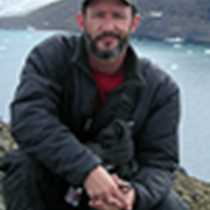Hells Canyon
Today began wet and a little windy. The Sea Bird approached the twin cities of Lewiston, Idaho and Clarkston, Washington. The towns, of course, being named for the leaders of the famous expedition some 200 years ago. They had traveled down the Clearwater River to its confluence with the Snake. We would be tied up to a dock at that same location.
After transferring to a large jetboat, a type of conveyance that Lewis and Clark would have gladly traded their firstborn for, we began a days journey up into Hells Canyon to witness the amazing cliffs of basalt, limestone, and granite that make up the walls of North Americas’ deepest gorge. There were good views of some of the many creatures that reside in the canyon as well. Numerous ospreys, great blue herons, Canada geese, swallows, and mallards dotted the shores and trees along the river. The most interesting mammal of the day was a group of rocky mountain bighorn sheep resting up the canyon from shore. A disease given to them by domesticated sheep less than 30 years ago wiped out these animals. Once the domesticated sheep were removed from the canyon, bighorns were reintroduced and now flourish.
The day ended with sunshine that showed off the emerald green hills of the canyon as the jetboat dropped us off back at the ship where some chose to extend their day with a visit to the Nez Perce Indian Reservation in Idaho while others enjoyed a peaceful walk along the waterfront.
Today began wet and a little windy. The Sea Bird approached the twin cities of Lewiston, Idaho and Clarkston, Washington. The towns, of course, being named for the leaders of the famous expedition some 200 years ago. They had traveled down the Clearwater River to its confluence with the Snake. We would be tied up to a dock at that same location.
After transferring to a large jetboat, a type of conveyance that Lewis and Clark would have gladly traded their firstborn for, we began a days journey up into Hells Canyon to witness the amazing cliffs of basalt, limestone, and granite that make up the walls of North Americas’ deepest gorge. There were good views of some of the many creatures that reside in the canyon as well. Numerous ospreys, great blue herons, Canada geese, swallows, and mallards dotted the shores and trees along the river. The most interesting mammal of the day was a group of rocky mountain bighorn sheep resting up the canyon from shore. A disease given to them by domesticated sheep less than 30 years ago wiped out these animals. Once the domesticated sheep were removed from the canyon, bighorns were reintroduced and now flourish.
The day ended with sunshine that showed off the emerald green hills of the canyon as the jetboat dropped us off back at the ship where some chose to extend their day with a visit to the Nez Perce Indian Reservation in Idaho while others enjoyed a peaceful walk along the waterfront.




